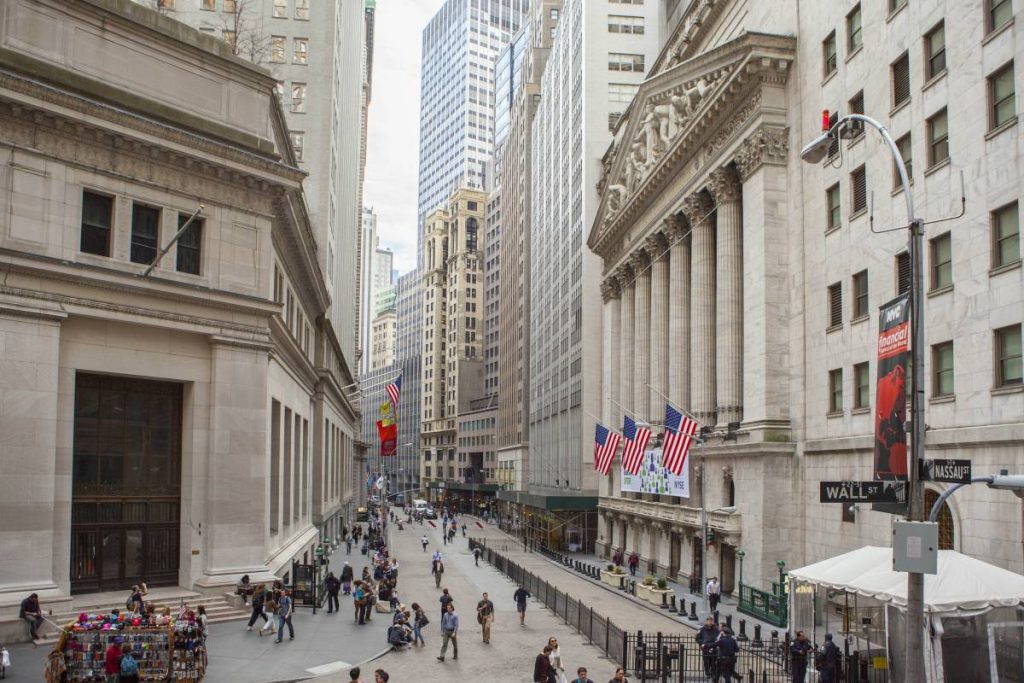Special places About New York’s Black History
From the slaves who helped build the wall on Wall Street to the young people who gave rise to hip-hop in a park in the Bronx, there is a lot of history in New York City, and it has been really cruel at times. Some of them are:
The Wall Street Slave Market (Manhattan)
Now associated with financial institutions and white-collar professionals, it was once a much bleaker site. The truth is that between 1711 and 1762, if any of us had walked around the corner of Wall St and Water St, we would have encountered an atrocious scene: the slave market.
Located near the East River, its strategic location allowed for the auction of slaves who arrived by ship after an arduous and exhausting transatlantic journey.
In addition to being a place for the buying and selling of human beings, the market served to solve another problem for the white population: the constant fear of rebellion. Instead of allowing slaves, both black and Native American, to wander the streets looking for work when their owners did not need them (during which time they could conspire with other slaves), hiring took place here.
Slavery in New York became such a lucrative business for the city that by 1730, 42% of New Yorkers owned at least one slave. Although slavery was officially abolished in New York in 1827, in practice it continued to exist until the arrival of the Civil War.
Today, a memorial plaque between Wall St and Water St remembers this dark chapter in history. The surprising thing is that this plaque was installed in 2015, showing that the city still faces difficulties in recognizing the fundamental role that black slaves played in the construction and economy of New York.
The Wall Street Wall
In 1653, Dutch settlers who had established their presence in the south of the island of Manhattan made the decision to erect a defensive wall that extended from one end of the area to the other, on what we know today as Wall Street.
This wall, built mainly of wood, was intended to protect the colony from possible attacks from both the English colonies and the surrounding indigenous nations.
Interestingly, the workforce used to construct the Wall Street Wall was largely made up of African slaves.
Louis Armstrong’s house
The legend, despite being born in New Orleans, spent the last decades of his life in New York.
Contrary to what many might expect, instead of opting for a luxurious residence in the suburbs, he and his wife, Lucille, decided to settle in the humble neighborhood of Corona, in Queens.
Armstrong found great pleasure in the tranquility and diversity of this area. Upon his return from tours, he was greeted with enthusiasm by the neighborhood children, who ran to help him carry his suitcases to his house, where Lucille welcomed them all with ice cream.
Today, his home is a museum known as the Louis Armstrong House Museum, where everything has been preserved as it was when they lived there. The guided tour experience is charming, since in addition to learning about the musician and enjoying his music, the house offers an experience that transports you back in time.
As additional information, for those who want to visit his grave, Louis Armstrong is buried in the Flushing Cemetery, a few kilometers away from the Louis Armstrong House Museum.
Seneca Village in Central Park
Before Central Park existed, the central and western area of what is now the park (roughly between the Museum of Natural History and the Reservoir) was occupied by Seneca Village, a community founded in 1825 by free African Americans.
Seneca Village stood out in the city for the high proportion of African Americans who owned their own homes. It had more than 250 residents, including some Irish immigrants, and had its own churches, cemeteries and school.
However, New York had other plans for that vast rural area in northern Manhattan: the creation of a huge park. Seneca Village represented an obstacle to these plans, so in 1857, residents were forced from their homes and the village was wiped off the map.
We have the unbeatable price of $500 per day for your Billboard:
Option 1: Your 60 second video/photo will be shown, 60 seconds per hour 22 times a day.
Option 2: Your 30 second video/photo will be shown, twice an hour, 44 times a day.
Option 3: Your 15 second video/photo will be shown 4 times per hour 88 times per day.
Please let us know which option you would like to choose. Remember that we have a response time of 72 hours.

